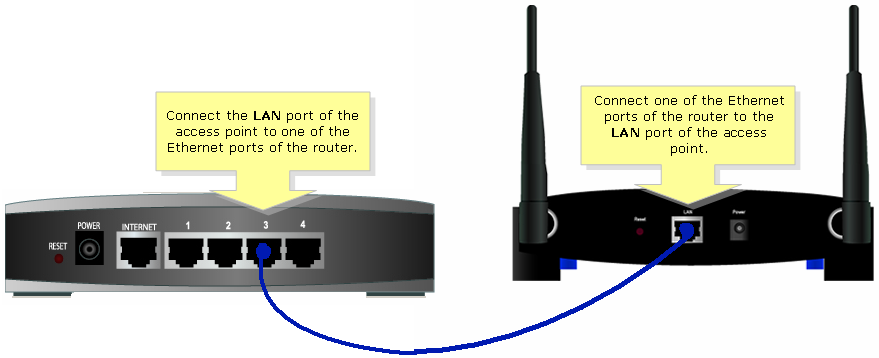
- #MODEM VS ROUTER DEFINE HOW TO#
- #MODEM VS ROUTER DEFINE PASSWORD#
- #MODEM VS ROUTER DEFINE PLUS#
- #MODEM VS ROUTER DEFINE FREE#
Here are the operation roles available in an Asus router. Some routers have even more roles - those from Asus, for example, also feature the proprietary AiMesh node role.
#MODEM VS ROUTER DEFINE PLUS#
Not all hardware supports all of these, but most will have at least the first one plus another. Your home Wi-Fi router can function more than just a router, which is its default role.īelow is the breakdown of four typical roles of a router. Click the button below to find out more if you’re not aware of that. That’s because a standard home router generally supports multiple roles. (Not sure which is which? Check out this post on APs and Extenders.) Extra: Different roles of a home Wi-Fi routerīy the way, if you happen to have an old Wi-Fi router lying around, it might come in handy. In this case, you need either an access point (AP) or a Wi-Fi extender. If you live in a big home and the existing gateway doesn’t cover your entire home with Wi-Fi, it’s time to think about getting extra hardware to improve the coverage. Dig into your gateway’s web interface you might get surprised by how much you can get out of it. In short, just because you don’t use a standard off-the-shelf router doesn’t mean you can’t make your network with specific advanced settings. Again, you can use the interface to customize these. This part is optional, but most gateways have a decent set of features and settings that you can use - the amount varies from one device to another.Įxamples include port-forwarding, Dynamic DNS, separating the 2.4GHz Wi-Fi network from the 5GHz, etc. It’s the name that will appear as an available Wi-Fi network on a mobile device.Īgain, you can do this via the web interface and follow these guidelines in terms of passwords to keep your system secure.
#MODEM VS ROUTER DEFINE PASSWORD#
You can give your Wi-Fi network a personalized name and a password that you can remember.īy the way, you can use your name as the SSID (network name), but if you want to stay anonymous, pick anything to your liking. Make a meaningful Wi-Fi networkīy default, each gateway has a default Wi-Fi network, of which both the name and password are hard to remember or type in, especially when you need to do that on a small screen or via a remote control. Once you’ve logged in, navigate the interface to the area where you can change the password and create a new, more secure one. You can generally find this information on the side or bottom of the device. To do that, log in to the gateway’s web interface by pointing a browser to its IP address and log in with the default password (or access code). It’s easy to change a Comcast gateway’s admin password via the link at the interface’s top right corner. For security, you should change the password to something else. Change the default access to the gatewayĪll ISP-provided gateway comes with default admin access.įor example, a Comcast gateway’s default password is almost always highspeed - anyone with that knowledge can log into its interface when being part of the network. By the way, you can work on a gateway the same way you do a regular Wi-Fi router. The benefits are enough to justify the monthly “rental” fee for some.īut in this case, you want to configure that gateway properly. In short, using ISP-proved equipment is not all bad. Unlimited data cap: Some providers, such as Comcast Xfinity, give you half the cost ($25 vs $50) of unlimited monthly data cap when you use their gateway.(That is if you’re OK with the potential privacy risks.) Easy management: With some providers, you can manage certain aspects of your home network, like changing the Wi-Fi password, via your online account.The provider also upgrades the equipment when need be.
#MODEM VS ROUTER DEFINE FREE#
Hassle-free hardware replacement: If the gateway dies, call the provider, and you’ll get a replacement pronto - all free of charge.Less cluttering: You only have one hardware box instead of two.The provider will set up the home network work for you and manage the hardware, including firmware update, troubleshooting, etc. Ease of use: You don’t need to do anything.While it’s clear that it’s best to use your equipment, there are some benefits to using a gateway provided by your Internet provider. If you choose to use it instead of getting your own equipment, you should think about making the most out of it.Įxtra: Why you’d want to use an ISP-supplied gateway If you live in a small home, chances are the router you have at hand, likely it’s the gateway your Internet provider has installed, is enough for your Wi-Fi need.
#MODEM VS ROUTER DEFINE HOW TO#
How to configure an ISP-provided gateway properly



 0 kommentar(er)
0 kommentar(er)
